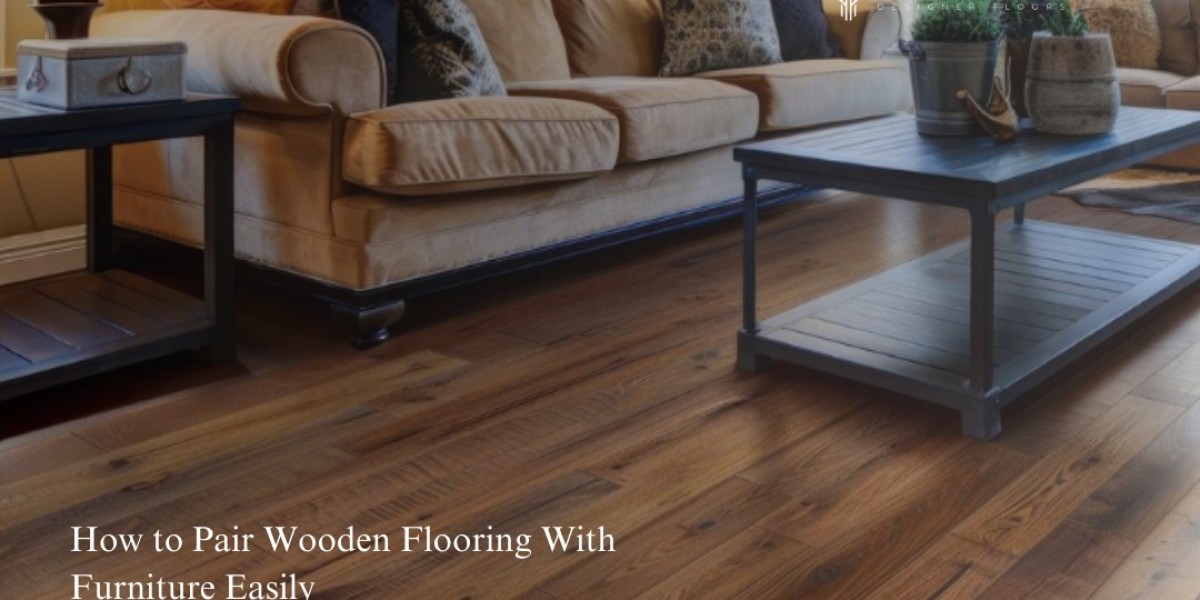Wooden flooring is a timeless and elegant choice for any home, bringing warmth and natural beauty into the living space. However, pairing wooden flooring with furniture can sometimes be challenging due to the vast array of wood types, colors, and finishes available. Here’s a guide to help you easily match your wooden flooring with the perfect furniture to create a harmonious and stylish interior.
1. Understand the Undertones
The first step in pairing wooden flooring with furniture is to understand the undertones of the wood. Wood can have warm, cool, or neutral undertones. For example, oak often has warm, yellow undertones, while maple may have cooler, reddish tones. Matching the undertones of your flooring and furniture helps create a cohesive look. If your floor has warm undertones, choose furniture with similar warm tones. Conversely, for cool-toned flooring, opt for furniture that complements these hues.
2. Consider the Wood Grain
The grain pattern of the wood can also influence how well your furniture pairs with your flooring. Floors with a prominent grain, such as hickory or oak, can be balanced with furniture that has a subtler grain. This prevents the room from feeling overly busy. Conversely, if your flooring has a subtle grain, you might introduce furniture with a more pronounced grain pattern for visual interest.
3. Mix and Match Wood Types
While matching wood types can create a cohesive look, mixing different types of wood can add depth and character to your space. The key is to ensure that the different wood tones complement each other. A common approach is to use a dominant wood type for the floor and larger furniture pieces and then introduce a secondary wood type through accent pieces like coffee tables or chairs. This can create a layered and dynamic aesthetic.
4. Play with Contrast
Creating contrast between your wooden or laminate flooring and furniture can lead to a striking and sophisticated look. Dark wooden floors paired with light-colored furniture can make the room feel airy and open, while light floors with dark furniture can add drama and depth. The contrast also helps in defining different areas within an open-plan space, making each area stand out.
5. Consider the Finish
The finish of both your flooring and furniture can significantly impact the overall look of your space. Matte finishes give a more modern and understated look, while glossy finishes tend to appear more traditional and luxurious. Ensure that the finishes complement each other. For instance, pairing a matte-finished floor with high-gloss furniture can create an unbalanced look. Instead, aim for consistency in the finishes for a unified appearance.
6. Incorporate Rugs and Textiles
Rugs and textiles are excellent tools for tying together wooden floors and furniture. They can introduce color, pattern, and texture, which helps bridge any gaps between different wood tones and finishes. A well-chosen rug can anchor the furniture and create a focal point, making the room feel cohesive and well-designed.
7. Balance with Neutral Elements
Incorporating neutral elements like walls, curtains, and accessories can help balance the wood tones in your flooring and furniture. Neutral colors such as whites, grays, and beiges can provide a backdrop that allows the natural beauty of the wood to shine without overwhelming the space. They also offer flexibility, making it easier to update your furniture or decor in the future without clashing with your existing wood tones.
8. Use Accent Colors
Finally, don’t forget the power of accent colors. Introducing accents through cushions, throws, artwork, or small decor items can bring a room together and enhance the wooden elements. Choose colors that complement the wood tones and create a sense of harmony within the space.
Conclusion
Pairing wooden flooring with furniture doesn’t have to be daunting. By understanding undertones, considering grain patterns, mixing wood types, playing with contrast, balancing finishes, and incorporating textiles and neutral elements, you can create a beautifully cohesive and stylish interior. Remember, the goal is to create a space that feels balanced and reflects your style, making your home a welcoming and visually appealing haven.








